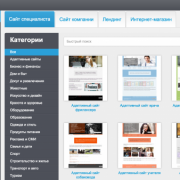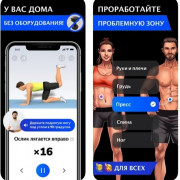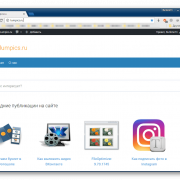Html form controls
Содержание:
- Доступность
- Input Group Sizing
- Валидация формы
- Подключение к функции PHP Mail
- Usage
- Accessibility
- Form Control Sizing
- Form text
- Флажки и переключатели
- Variants
- Configuration
- Direction
- Input Group with Dropdown Button
- Форма в одну строку
- Глобально важно
- Custom Select Menu Size
- Community
- Призыв к действию
- Form Layout
- Required Fields
- Отключенные формы
Доступность
Убедитесь, что у всех элементов управления формы есть подходящие доступные имена, чтобы их назначение можно было донести до пользователей вспомогательных технологий. Самый простой способ добиться этого — использовать элемент или в случае кнопок — включить достаточно описательный текст как часть содержимого .
В ситуациях, когда невозможно включить видимую метку или соответствующее текстовое содержимое, есть альтернативные способы предоставления доступного имени, например:
- Элементы скрыты с помощью класса
- Указание на существующий элемент, который может действовать как метка, используя
- Предоставление атрибута
- Явная установка доступного имени для элемента с помощью
Если ни один из них не присутствует, вспомогательные технологии могут прибегнуть к использованию атрибута в качестве запасного варианта для доступного имени в элементах и . Примеры в этом разделе представляют несколько предлагаемых подходов для конкретных случаев.
Несмотря на то, что использование визуально скрытого содержимого (содержимое , и даже , которое исчезает после того, как в поле формы появляется содержимое) принесет пользу пользователям вспомогательных технологий, отсутствие видимого текста метки все же может быть проблематично для некоторых пользователей. Как правило, лучше всего подходят видимые метки в той или иной форме как с точки зрения доступности, так и удобства использования.
Input Group Sizing
Use the class for small input groups and for large inputs groups:
Small
Default
Large
Example
<form> <div class=»input-group mb-3 input-group-sm»>
<div class=»input-group-prepend»>
<span class=»input-group-text»>Small</span> </div>
<input type=»text» class=»form-control»> </div></form>
<form> <div class=»input-group mb-3″> <div
class=»input-group-prepend»> <span
class=»input-group-text»>Default</span> </div>
<input type=»text» class=»form-control»> </div></form><form> <div
class=»input-group mb-3 input-group-lg»> <div
class=»input-group-prepend»> <span
class=»input-group-text»>Large</span> </div>
<input type=»text» class=»form-control»> </div></form>
Валидация формы
Давайте начнем с установки валидатора после ввода данных формы обратной связи AJAX PHP. Перейдите в файл scripts.js и отредактируйте первый фрагмент кода, который вызывает функцию SubmitForm() после того, как данные формы отправлены. Его нужно изменить следующим образом:
$("#contactForm").validator().on("submit", function (event) {
if (event.isDefaultPrevented()) {
// обработка ошибки формы...
} else {
// все в порядке!
event.preventDefault();
submitForm();
}
});
Этот новый фрагмент кода проверяет, нашел ли Bootstrap Validator проблемы и остановил ли работу кода. Если нет, мы продолжаем выполнение действий в стандартном режиме. Нам все еще нужно исключить действие по умолчанию (перезагрузку страницы без заполнения формы) из сценария представления данных формы.
Теперь, если мы нажмем кнопку отправки данных формы, не заполнив все поля, пустые будут выделяться красным цветом:

В процессе добавления валидации мы заблокировали родную валидацию HTML5. Можно добавить в валидацию дополнительный контекст, включив сообщения об ошибках. Bootstrap Validator имеет удобную функцию, позволяющую отобразить сообщения об ошибке по каждому из полей. Чтобы добавить их, нужно дополнить разметку HTML.
Внутри каждой form-group под полем ввода данных нужно разместить следующий HTML-код:
<div class="help-block with-errors"></div>
В качестве примера ниже приведен дополнительный div, добавляемый полям имени и адреса электронной почты:
<div class="row">
<div class="form-group col-sm-6">
<label for="name" class="h4">Name</label>
<input type="text" class="form-control" id="name" placeholder="Enter name" required>
<div class="help-block with-errors"></div>
</div>
<div class="form-group col-sm-6">
<label for="email" class="h4">Email</label>
<input type="email" class="form-control" id="email" placeholder="Enter email" required>
<div class="help-block with-errors"></div>
</div>
</div>
Теперь при повторной отправке данных AJAX JQuery формы будет выводиться сообщение об ошибке, если поля формы не были заполнены: “Please fill in this field.”. Добавив data-атрибут для вводимых данных под названием “data-error”, можно включить пользовательское сообщение об ошибке.
Например:
<input type="input" data-error="Новое сообщение об ошибке">

Подключение к функции PHP Mail
Теперь нужно написать скрипт, который будет получать данные из формы AJAX, и отправлять контент через функцию PHP Mail. Откройте файл process.php и добавьте в него следующий код:
<?php
$name = $_POST;
$email = $_POST;
$message = $_POST;
$EmailTo = "emailaddress@test.com";
$Subject = "New Message Received";
// готовим тело электронного письма
$Body .= "Name: ";
$Body .= $name;
$Body .= "n";
$Body .= "Email: ";
$Body .= $email;
$Body .= "n";
$Body .= "Message: ";
$Body .= $message;
$Body .= "n";
// отправляем электронную почту
$success = mail($EmailTo, $Subject, $Body, "From:".$email);
// перенаправляем на страницу сообщения об успешной отправке данных формы
if ($success){
echo "success";
}else{
echo "invalid";
}
?>
Тело письма создается произвольно с добавлением трех созданных переменных. Сначала мы задаем текст описания, например, «Name:«, затем идет переменная, а затем перенос на новую строку (/n). Те же действия мы повторяем, связывая все данные с переменной $body.
Чтобы отправить электронное письмо, мы присоединяем его к почтовой функции. Присвоив значение переменной $success, мы задаем адрес электронной почты, на который будет отправлено письмо, тему письма, тело и адрес электронной почты отправителя.
Чтобы начать процесс отправки электронной почте, нужно вызвать его в операторе if. Таким образом можно проверить, были ли данные формы успешно предоставлены или нет. Если функция Mail возвращает “true”, скрипт возвращает “success”, если функция выдает ошибку, возвращается “invalid”.
Этот результат будет возвращаться объекту AJAX, и обрабатываться на стороне клиента. Преимущества AJAX заключается в том, что все это делается в асинхронном режиме на стороне клиента. Это позволяет пользователю продолжать взаимодействовать с сайтом во время отправки данных AJAX form:

Usage
bootstrap_form_for
To get started, use the helper in place of the Rails helper. Here’s an example:
<%= bootstrap_form_for(@user) do |f| %> <%= f.email_field :email %> <%= f.password_field :password %> <%= f.check_box :remember_me %> <%= f.submit "Log In" %> <% end %>
This generates the following HTML:
<form accept-charset="UTF-8" action="/users" class="new_user" id="new_user" method="post">
<div class="mb-3">
<label class="form-label" for="user_email">Email</label>
<input class="form-control" id="user_email" name="user" type="email">
</div>
<div class="mb-3">
<label class="form-label" for="user_password">Password</label>
<input class="form-control" id="user_password" name="user" type="password">
</div>
<div class="form-check">
<input name="user" type="hidden" value="">
<input class="form-check-input" id="user_remember_me" name="user" type="checkbox" value="1">
<label class="form-check-label" for="user_remember_me">Remember me</label>
</div>
<input class="btn btn-secondary" name="commit" type="submit" value="Log In">
</form>
bootstrap_form_tag
If your form is not backed by a model, use the . Usage of this helper is the same as , except no model object is passed in as the first argument. Here’s an example:
<%= bootstrap_form_tag url: '/subscribe' do |f| %> <%= f.email_field :email, value: 'name@example.com' %> <%= f.submit %> <% end %>
bootstrap_form_with
Note that in Rails 5.1 does not add IDs to form elements and labels by default, which are both important to Bootstrap markup. This behaviour is corrected in Rails 5.2.
To get started, just use the helper in place of . Here’s an example:
<%= bootstrap_form_with(model: @user, local: true) do |f| %> <%= f.email_field :email %> <%= f.password_field :password %> <%= f.check_box :remember_me %> <%= f.submit "Log In" %> <% end %>
This generates:
<form action="/users" accept-charset="UTF-8" method="post">
<input name="utf8" type="hidden" value="✓" />
<div class="mb-3">
<label class="form-label required" for="user_email">Email</label>
<input class="form-control" type="email" value="steve@example.com" name="user" />
</div>
<div class="mb-3">
<label class="form-label" for="user_password">Password</label>
<input class="form-control" type="password" name="user" />
<small class="form-text text-muted">A good password should be at least six characters long</small>
</div>
<div class="form-check">
<input name="user" type="hidden" value="">
<input class="form-check-input" id="user_remember_me" name="user" type="checkbox" value="1">
<label class="form-check-label" for="user_remember_me">Remember me</label>
</div>
<input type="submit" name="commit" value="Log In" class="btn btn-secondary" data-disable-with="Log In" />
</form>
supports both the and use cases
in .
Accessibility
Ensure that all form controls have an appropriate accessible name so that their purpose can be conveyed to users of assistive technologies. The simplest way to achieve this is to use a element, or—in the case of buttons—to include sufficiently descriptive text as part of the content.
For situations where it’s not possible to include a visible or appropriate text content, there are alternative ways of still providing an accessible name, such as:
- elements hidden using the class
- Pointing to an existing element that can act as a label using
- Providing a attribute
- Explicitly setting the accessible name on an element using
If none of these are present, assistive technologies may resort to using the attribute as a fallback for the accessible name on and elements. The examples in this section provide a few suggested, case-specific approaches.
While using visually hidden content (, , and even content, which disappears once a form field has content) will benefit assistive technology users, a lack of visible label text may still be problematic for certain users. Some form of visible label is generally the best approach, both for accessibility and usability.
Form Control Sizing
You can set heights and widths of forms using classes like .input-lg and .col-lg-* respectively. The following example demonstrates this −
<form role = "form">
<div class = "form-group">
<input class = "form-control input-lg" type = "text" placeholder =".input-lg">
</div>
<div class = "form-group">
<input class = "form-control" type = "text" placeholder = "Default input">
</div>
<div class = "form-group">
<input class = "form-control input-sm" type = "text" placeholder = ".input-sm">
</div>
<div class = "form-group"></div>
<div class = "form-group">
<select class = "form-control input-lg">
<option value = "">.input-lg</option>
</select>
</div>
<div class = "form-group">
<select class = "form-control">
<option value = "">Default select</option>
</select>
</div>
<div class = "form-group">
<select class = "form-control input-sm">
<option value = "">.input-sm</option>
</select>
</div>
<div class = "row">
<div class = "col-lg-2">
<input type = "text" class = "form-control" placeholder = ".col-lg-2">
</div>
<div class = "col-lg-3">
<input type = "text" class = "form-control" placeholder = ".col-lg-3">
</div>
<div class = "col-lg-4">
<input type = "text" class = "form-control" placeholder = ".col-lg-4">
</div>
</div>
</form>
Form text
Block-level or inline-level form text can be created using .
Associating form text with form controls
Form text should be explicitly associated with the form control it relates to using the attribute. This will ensure that assistive technologies—such as screen readers—will announce this form text when the user focuses or enters the control.
Form text below inputs can be styled with . If a block-level element will be used, a top margin is added for easy spacing from the inputs above.
Inline text can use any typical inline HTML element (be it a , , or something else) with nothing more than the class.
Флажки и переключатели
Bootstrap 4 предоставляет классы .form-check, .form-check-label, .form-check-input и .form-check-inline для отображения флажков и переключателей.
Чтобы отобразить флажки или переключатели друг под другом, вложите каждый из них в элемент <div> с классом .form-check. Кроме того, добавьте .form-check-label к элементу <label> и .form-check-input к элементу <input>.
В одну строку
В Bootstrap 4 флажки и переключатели по умолчанию располагаются друг под другом. Вы можете отобразить их в одну строку, добавив .form-check-inline к внешнему <div>. Оставьте .form-check-input в элементе <input>.
<link rel=»stylesheet» href=»https://maxcdn.bootstrapcdn.com/bootstrap/4.0.0/css/bootstrap.min.css»>
<!— Флажки —>
<div class=»form-check form-check-inline»>
<input class=»form-check-input» type=»checkbox» id=»inlineCheckbox1″ value=»1″>
<label class=»form-check-label»>1</label>
</div>
<div class=»form-check form-check-inline»>
<input class=»form-check-input» type=»checkbox» id=»inlineCheckbox2″ value=»2″>
<label class=»form-check-label»>2</label>
</div>
<div class=»form-check form-check-inline»>
<input class=»form-check-input» type=»checkbox» id=»inlineCheckbox3″ value=»3″>
<label class=»form-check-label»>3</label>
</div>
<!— Переключатели —>
<div class=»form-check form-check-inline»>
<input class=»form-check-input» type=»radio» name=»inlineRadioOptions» id=»inlineRadio1″ value=»1″>
<label class=»form-check-label»>1</label>
</div>
<div class=»form-check form-check-inline»>
<input class=»form-check-input» type=»radio» name=»inlineRadioOptions» id=»inlineRadio2″ value=»2″>
<label class=»form-check-label»>2</label>
</div>
<div class=»form-check form-check-inline»>
<input class=»form-check-input» type=»radio» name=»inlineRadioOptions» id=»inlineRadio3″ value=»3″>
<label class=»form-check-label»>3</label>
</div>
</div>
Bootstrap 4 против Bootstrap 3
Bootstrap 3 для отображения флажков и переключателей использует .radio, .radio-inline, .checkbox или .checkbox-inline. Bootstrap 4 использует .form-check, .form-check-label, .form-check-input и .form-check-inline.
Variants
Use contextual classes to color tables, table rows or individual cells.
| Class | Heading | Heading |
|---|---|---|
| Default | Cell | Cell |
| Primary | Cell | Cell |
| Secondary | Cell | Cell |
| Success | Cell | Cell |
| Danger | Cell | Cell |
| Warning | Cell | Cell |
| Info | Cell | Cell |
| Light | Cell | Cell |
| Dark | Cell | Cell |
Conveying meaning to assistive technologies
Using color to add meaning only provides a visual indication, which will not be conveyed to users of assistive technologies – such as screen readers. Ensure that information denoted by the color is either obvious from the content itself (e.g. the visible text), or is included through alternative means, such as additional text hidden with the class.
Configuration
can be used out-of-the-box without any configuration. However, does have an optional configuration file at for setting options that affect all generated forms in an application.
The current configuration options are:
| Option | Default value | Description |
|---|---|---|
| versions 3 and 4 added a role=»form» attribute to all forms. The W3C validator will raise a warning on forms with a role=»form» attribute. version 5 drops this attribute by default. Set this option to to make forms non-compliant with W3C, but generate the attribute like versions 3 and 4. |
Example:
# config/initializers/bootstrap_form.rb
BootstrapForm.configure do |c|
c.default_form_attributes = { role: "form" } # to make forms non-compliant with W3C.
end
Direction
Set the direction of flex items in a flex container with direction utilities. In most cases you can omit the horizontal class here as the browser default is . However, you may encounter situations where you needed to explicitly set this value (like responsive layouts).
Use to set a horizontal direction (the browser default), or to start the horizontal direction from the opposite side.
Flex item 1
Flex item 2
Flex item 3
Flex item 1
Flex item 2
Flex item 3
Use to set a vertical direction, or to start the vertical direction from the opposite side.
Flex item 1
Flex item 2
Flex item 3
Flex item 1
Flex item 2
Flex item 3
Responsive variations also exist for .
Input Group with Dropdown Button
Add a dropdown button in the input group. Note that you don’t need the .dropdown wrapper, as you normally would.
Dropdown button
Link 1
Link 2
Link 3
Example
<div class=»input-group mt-3 mb-3″> <div class=»input-group-prepend»> <button
type=»button» class=»btn btn-outline-secondary dropdown-toggle»
data-toggle=»dropdown»> Dropdown
button </button> <div class=»dropdown-menu»>
<a
class=»dropdown-item» href=»#»>Link 1</a> <a class=»dropdown-item» href=»#»>Link 2</a> <a class=»dropdown-item» href=»#»>Link 3</a> </div> </div> <input type=»text»
class=»form-control» placeholder=»Username»></div>
Форма в одну строку
Используйте класс .form-inline, чтобы элементы формы отображались как строчно-блочные и выравнивались по левому краю. Используйте вспомогательные класса (например, mr-sm-2), чтобы добавить пространство между элементами.
Обратите внимание, всё это применимо только тогда, когда область просмотра имеет ширину не меньше 576 пикселей.
Имя
Фамилия
Отправить
<link rel=»stylesheet» href=»https://maxcdn.bootstrapcdn.com/bootstrap/4.0.0/css/bootstrap.min.css»>
<form class=»form-inline»>
<label class=»mr-sm-2 mb-0″ for=»first_name»>Имя</label>
<input type=»text» class=»form-control mr-sm-2 mb-2 mb-sm-0″ id=»first_name» name=»first_name»>
<label class=»mr-sm-2 mb-0″ for=»last_name»>Фамилия</label>
<input type=»text» class=»form-control mr-sm-2 mb-2 mb-sm-0″ id=»last_name» name=»last_name»>
<button type=»submit» class=»btn btn-primary mt-2 mt-sm-0″>Отправить</button>
</form>
Глобально важно
Bootstrap использует несколько важных глобальных стилей и настроек, о которых Вам нужно знать при его использовании. Все они почти исключительно направлены на нормализацию кроссбраузерных стилей. Давайте погрузимся.
Тип текущего документа
Bootstrap требует использования doctype HTML5. Без него Вы увидите несколько забавных неполных стилей, но его включение не должно вызывать каких-либо серьезных сбоев.
Адаптивный метатег
Bootstrap разработан mobile first (сначала мобильный), стратегия, в которой мы сначала оптимизируем код для мобильных устройств, а затем масштабируем компоненты по мере необходимости с помощью медиа-запросов CSS. Чтобы обеспечить правильный рендеринг и сенсорное масштабирование для всех устройств, добавьте метатег адаптивного окна просмотра (viewport) к Вашему .
Вы можете увидеть пример этого в действии в .
Свойство Box-sizing
Для более простого изменения размеров в CSS мы переключаем глобальное значение с на . Это гарантирует, что не влияет на окончательную вычисленную ширину элемента, но может вызвать проблемы с некоторым сторонним программным обеспечением, таким как Google Maps и Google Custom Search Engine.
В редких случаях Вам нужно переопределить его, используйте что-то вроде следующего:
В приведенном выше фрагменте все вложенные элементы, включая сгенерированный контент с помощью и будут наследовать указанный для этого .
Узнайте больше о коробочной модели и размерах на сайте CSS Tricks.
Перезагрузка
Для улучшения кроссбраузерности рендеринга мы используем Reboot, чтобы исправить несоответствия между браузерами и устройствами, обеспечивая при этом несколько более самоуверенный сброс общих элементов HTML.
Custom Select Menu Size
Use the class to create a small select menu and the class for a large one:
Small Custom Select MenuVolvoFiatAudiDefault Custom Select MenuVolvoFiatAudiLarge Custom Select MenuVolvoFiatAudi
Example
<form> <!— Small —> <select name=»cars» class=»custom-select-sm»>
<option selected>Small Custom Select Menu</option> <option
value=»volvo»>Volvo</option> <option value=»fiat»>Fiat</option>
<option value=»audi»>Audi</option> </select> <!— Large —> <select name=»cars» class=»custom-select-lg»>
<option selected>Large Custom Select Menu</option> <option
value=»volvo»>Volvo</option> <option value=»fiat»>Fiat</option>
<option value=»audi»>Audi</option> </select></form>
Community
Stay up to date on the development of Bootstrap and reach out to the community with these helpful resources.
- Read and subscribe to The Official Bootstrap Blog.
- Join the official Slack room.
- Chat with fellow Bootstrappers in IRC. On the server, in the channel.
- Implementation help may be found at Stack Overflow (tagged ).
- Developers should use the keyword on packages that modify or add to the functionality of Bootstrap when distributing through npm or similar delivery mechanisms for maximum discoverability.
You can also follow @getbootstrap on Twitter for the latest gossip and awesome music videos.
Призыв к действию
Создадим submit button. Bootstrap содержит классы для различных кнопок и их состояний. Мы решили использовать кнопку “success” (btn-success), которая, по умолчанию, является зеленой.
Также нужно применить базовый класс btn, чтобы сбросить основные параметры кнопки (рамка, отступ, выравнивание текста, размер шрифта). Мы применили класс btn-lg, который создает большую кнопку, а затем класс pull-right, который задает обтекание кнопки слева.
После кнопки мы включили div с идентификатором #msgSubmit и применили следующие классы: «h3 text-center hidden«. Класс h3 помогает создать больший заголовок, text-center устанавливает выравнивание текста по центру, а hidden — задает display: none и visible: hidden:

Form Layout
Bootstrap provides you with following types of form layouts −
- Vertical (default) form
- In-line form
- Horizontal form
Vertical or Basic Form
The basic form structure comes with Bootstrap; individual form controls automatically receive some global styling. To create a basic form do the following −
-
Add a role form to the parent <form> element.
-
Wrap labels and controls in a <div> with class .form-group. This is needed for optimum spacing.
-
Add a class of .form-control to all textual <input>, <textarea>, and <select> elements.
<form role = "form">
<div class = "form-group">
<label for = "name">Name</label>
<input type = "text" class = "form-control" id = "name" placeholder = "Enter Name">
</div>
<div class = "form-group">
<label for = "inputfile">File input</label>
<input type = "file" id = "inputfile">
<p class = "help-block">Example block-level help text here.</p>
</div>
<div class = "checkbox">
<label><input type = "checkbox"> Check me out</label>
</div>
<button type = "submit" class = "btn btn-default">Submit</button>
</form>
Inline Form
To create a form where all of the elements are inline, left aligned and labels are alongside, add the class .form-inline to the <form> tag.
<form class = "form-inline" role = "form">
<div class = "form-group">
<label class = "sr-only" for = "name">Name</label>
<input type = "text" class = "form-control" id = "name" placeholder = "Enter Name">
</div>
<div class = "form-group">
<label class = "sr-only" for = "inputfile">File input</label>
<input type = "file" id = "inputfile">
</div>
<div class = "checkbox">
<label><input type = "checkbox"> Check me out</label>
</div>
<button type = "submit" class = "btn btn-default">Submit</button>
</form>
-
By default inputs, selects, and textareas have 100% width in Bootstrap. You need to set a width on the form controls when using inline form.
-
Using the class .sr-only you can hide the labels of the inline forms.
Horizontal Form
Horizontal forms stands apart from the others not only in the amount of markup, but also in the presentation of the form. To create a form that uses the horizontal layout, do the following −
-
Add a class of .form-horizontal to the parent <form> element.
-
Wrap labels and controls in a <div> with class .form-group.
-
Add a class of .control-label to the labels.
<form class = "form-horizontal" role = "form">
<div class = "form-group">
<label for = "firstname" class = "col-sm-2 control-label">First Name</label>
<div class = "col-sm-10">
<input type = "text" class = "form-control" id = "firstname" placeholder = "Enter First Name">
</div>
</div>
<div class = "form-group">
<label for = "lastname" class = "col-sm-2 control-label">Last Name</label>
<div class = "col-sm-10">
<input type = "text" class = "form-control" id = "lastname" placeholder = "Enter Last Name">
</div>
</div>
<div class = "form-group">
<div class = "col-sm-offset-2 col-sm-10">
<div class = "checkbox">
<label><input type = "checkbox"> Remember me</label>
</div>
</div>
</div>
<div class = "form-group">
<div class = "col-sm-offset-2 col-sm-10">
<button type = "submit" class = "btn btn-default">Sign in</button>
</div>
</div>
</form>
Required Fields
A label that is associated with a required field is automatically annotated with
a CSS class. doesn’t provide any styling for required fields. You’re free to add any appropriate CSS to style
required fields as desired. One example would be to automatically add an
asterisk to the end of the label:
label.requiredafter {
content" *";
}
The label class is determined based on the definition of a presence
validator with the associated model attribute. Presently this is one of:
ActiveRecord::Validations::PresenceValidator or
ActiveModel::Validations::PresenceValidator.
In cases where this behaviour is undesirable, use the option to force the class to be present or absent:
<%= f.password_field :login, label: "New Username", required: true %> <%= f.password_field :password, label: "New Password", required: false %>
Отключенные формы
Добавьте логический атрибут для ввода, чтобы предотвратить взаимодействие с пользователем и сделать его более светлым.
Добавьте атрибут к , чтобы отключить все элементы управления внутри. Браузеры обрабатывают все элементы управления собственными формами (элементы , и ) внутри как отключенные, предотвращая взаимодействие с ними как с клавиатуры, так и с помощью мыши.
Однако, если Ваша форма также включает пользовательские элементы, похожие на кнопки, такие как , им будет присвоен стиль только , что означает, что они по-прежнему могут фокусироваться и управляться с помощью клавиатуры. В этом случае Вы должны вручную изменить эти элементы управления, добавив , чтобы они не получали фокус, и , чтобы сигнализировать о своем состоянии вспомогательным технологиям.






